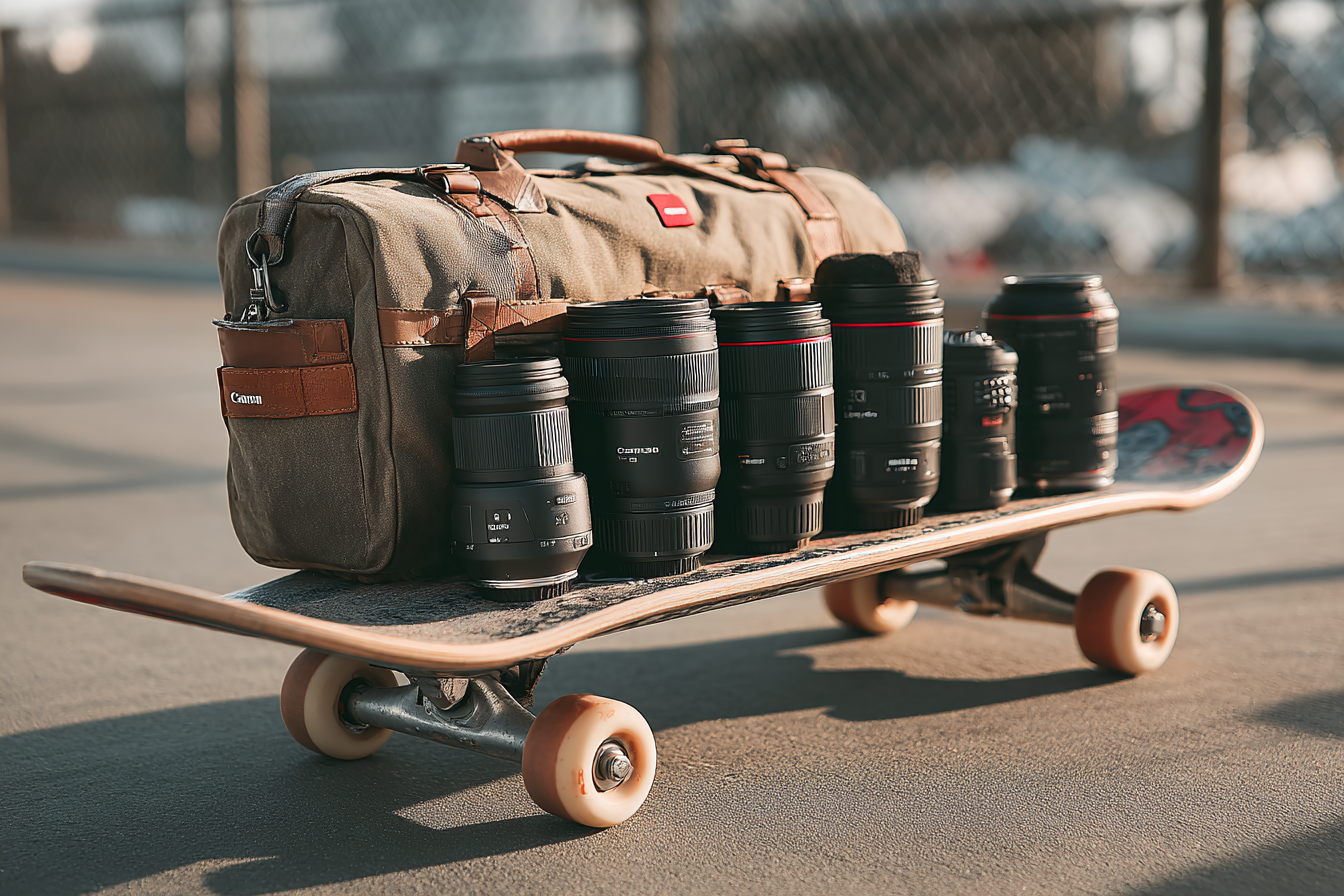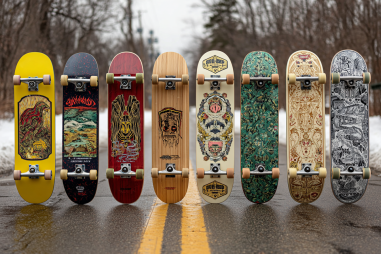Diving into the vibrant world of skateboarding photography means more than just having a good eye for dynamic shots. The gear you choose plays a pivotal role in ensuring you capture every ollie, kickflip, and grind with clarity and style. Whether you’re chasing street skaters in bustling urban spots or shooting at skateparks, your equipment needs to be agile, durable, and perfectly suited to fast-paced action. Let’s explore the essential gear you really need to get those sharp, memorable skateboarding photos.
Cameras and Lenses Suited for Skateboarding
The heart of skateboarding photography lies in your camera and lens setup. Skateboarding involves rapid movements, unpredictable tricks, and varying light conditions, so your gear must handle these challenges effectively.
For cameras, DSLRs and mirrorless models are top choices because of their high-quality sensors, fast autofocus systems, and versatility. Popular brands like Canon, Nikon, Sony, and Fujifilm offer models that excel in action photography. Look for cameras with high continuous shooting speeds (frames per second) so you can capture multiple frames in quick succession without missing that perfect moment. Additionally, a durable build and good weather sealing can be invaluable when shooting outdoors in unpredictable conditions.
When it comes to lenses, versatility and speed are critical. A fast zoom lens such as a 24-70mm f/2.8 offers a great range for most skateboarding scenarios, allowing you to quickly adjust framing without changing lenses. For tight shots of tricks, a 70-200mm f/2.8 telephoto lens excels by letting you stay at a safe distance while still getting close, detailed images. Prime lenses with wide apertures (like 35mm or 50mm f/1.8 or f/1.4) are fantastic for low light and creative depth-of-field effects, but they require more movement to compose shots.
Tripods, Stabilizers, and Mounts
While skateboarding is all about action and mobility, having some stabilization tools can enhance your shooting experience and image quality. A tripod might seem cumbersome for skate shoots, but lightweight travel tripods can help during planned or set shots, like staged portraits or long exposure creativity.
More importantly, consider portable stabilizers such as gimbals or shoulder rigs designed for mirrorless or DSLR cameras. These devices reduce unwanted shake when you track moving skaters, resulting in smoother, professional-looking footage if you’re shooting video or sharper images when following action with stills. For GoPro enthusiasts using action cameras, various mounts—helmet, chest, or skateboard-mounted—offer creative angles that immerse viewers in the skateboarding experience.
Lighting Equipment: Flashes and Reflectors
Natural light is often your best friend in skate photography, especially outdoors. However, lighting conditions change quickly, and shadows can obscure critical details when skaters perform tricks.
Portable external flashes and speedlights allow you to supplement ambient light, freeze motion, and highlight your subject’s features and movements. Using flash sync with high shutter speeds can help capture crisp action shots even in shade or twilight. For more control, diffusers and bounce reflectors can soften harsh light and reduce shadows, giving your photos a professional polish.
Reflectors come in compact foldable designs and are inexpensive tools to brighten faces or add catchlights in the eyes of skaters. Sometimes, just a simple silver or white reflector can transform a flat image into something dynamic and vibrant without lugging heavy lighting rigs.
Protective Gear for Photographers on Location
Skateboarding photography often means putting yourself close to the action – sometimes in crowded skateparks or urban streets with uneven terrain. Staying safe and comfortable is essential.
Invest in protective gear such as durable and comfortable shoes with good grip to help you keep pace and avoid slipping. Wearing knee and elbow pads isn’t just for skaters; photographers crouching and moving rapidly will benefit from this extra protection. A lightweight helmet can be considered in more hazardous environments, especially when shooting near ramps or rails where skaters can fall unpredictably.
Weather-appropriate clothing that allows freedom of movement and protects you from rain or sun will keep you focused on the shoot rather than discomfort. Also, camera rain covers are essential to protect your expensive gear from sudden weather changes without having to pack up prematurely.
Accessories: Memory Cards, Batteries, and Bags
The best camera in the world won’t help if it runs out of juice or storage mid-shoot. Skateboarding sessions can last hours, so being prepared with enough accessories is key.
- Memory Cards: High-speed SD or CFexpress cards with ample capacity let you shoot continuous bursts without buffering delays. Always carry extra cards as backups to avoid missing shots due to full storage.
- Batteries: Bring multiple fully charged batteries. Action photography drains power fast, especially with autofocus and live view modes. Portable USB chargers or power banks can be lifesavers if you shoot with mirrorless cameras.
- Bags and Backpacks: A rugged, weather-resistant camera backpack with compartments for body, lenses, and accessories keeps you organized on the move. Look for bags with quick-access pockets so you can change lenses or grab flashes swiftly between shots.
- Lens Cleaning Kits: Skateparks can be dusty; having microfiber cloths and lens cleaning solutions ensures your glass stays spotless for crystal-clear photos.
Budget-Friendly vs. Professional Gear
Starting out in skateboarding photography doesn’t mean you need to break the bank immediately. There are plenty of affordable camera bodies and lenses that perform well for street and park sessions. Entry-level DSLRs or mirrorless cameras paired with a versatile kit lens can deliver impressive results as you build your skills.
On the other hand, professional gear offers faster autofocus, higher frame rates, better low-light performance, and greater durability—features appreciated as you progress and take on more challenging shoots. Consider renting high-end lenses or cameras for special events before committing to expensive purchases. The key is balancing quality with your budget and upgrading gradually as your demands grow.
Maintenance and Care Tips
Keeping your skateboarding photography gear in top shape ensures it performs when you need it most. After every shoot, inspect your equipment for dirt, dust, or damage. Clean your lenses with lens cleaner and microfiber cloths, making sure no abrasive particles scratch the glass.
Batteries should be stored in cool, dry places and regularly charged to preserve longevity. For cameras, keep firmware updated to enjoy improved features and fix bugs related to autofocus or shooting speeds. Protect your gear during transport with padded bags, and avoid exposing electronics to extreme temperatures or moisture.
Periodically have your camera and lenses serviced by professionals to maintain precision and reliability. Small investments in maintenance save costly repairs and downtime later on.
Finding Your Perfect Setup for Capturing Skateboarding
Skateboarding photography is an exciting challenge that blends speed, creativity, and technical skill. With the right gear essentials—from a fast camera and versatile lenses to protective clothing and smart accessories—you’ll be well-equipped to capture every thrilling moment on board. Remember, good gear complements your talent and passion but doesn’t replace practice and thoughtful composition. So pack smart, stay agile, and get ready to freeze those gravity-defying tricks in stunning detail!







